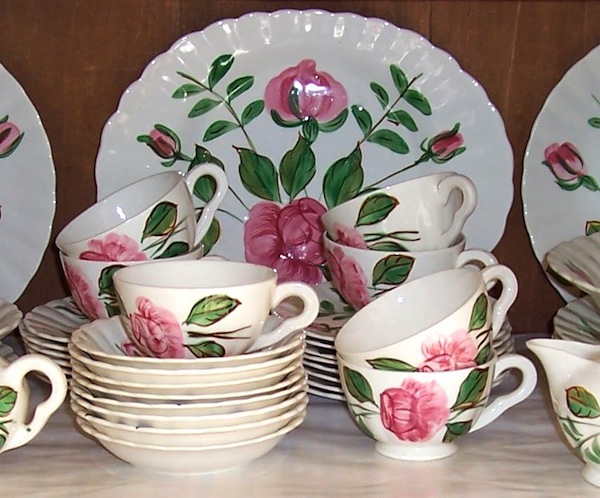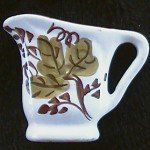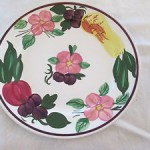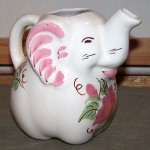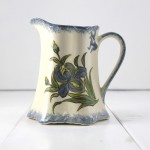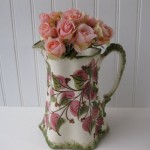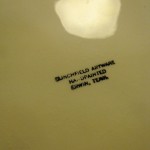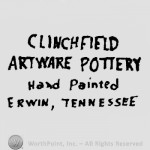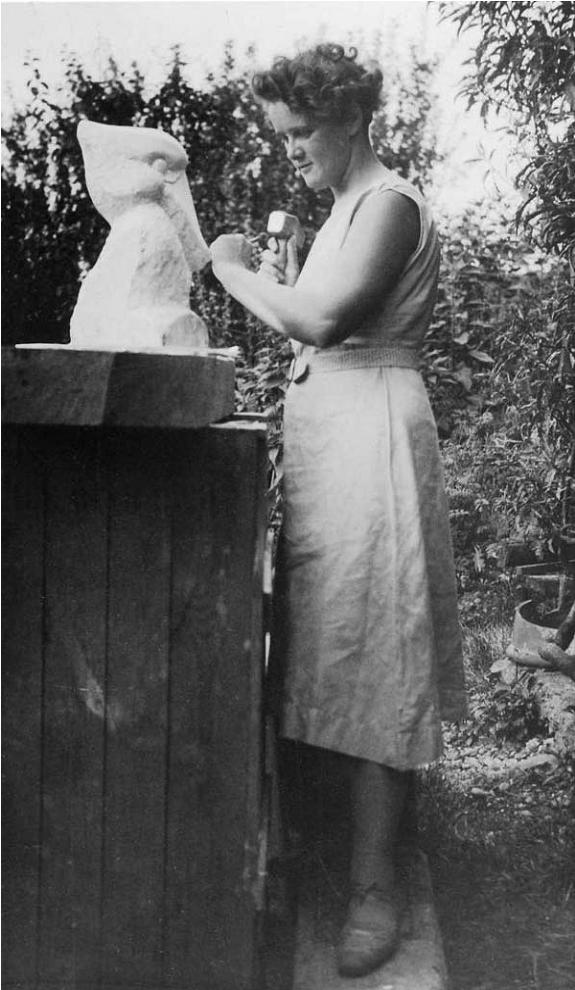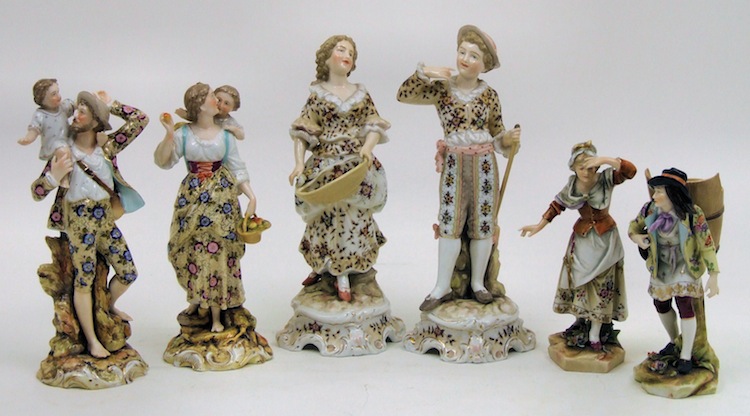History
Clinchfield pottery came about when the Clinchfield, North Carolina, and Ohio railroad company wanted to expand their rail shipping business. Noticing the success of other new up and coming pottery companies the decision was made to produce pottery. They focused their interests on a small town in Tennessee called Erwin. With it’s population of 300 people, Erwin was centrally located, and from the standpoint of the railroad, it provided easy transporting of the raw materials that were needed to make pottery. Clinchfield Pottery was started in 1916.
The original pottery workers were hired and imported from nearby Ohio. This is the reason the workers were labelled the “Northern People” by the residents of Erwin. The Ohio craftsmen were the ones to train the Erwin residents in the art of making and decorating pottery. Commercial production started in 1917, and was primarily centred around simple dinnerware. The patterns were simple, with the use of moulds and decal-applied patterns. Some evidence of sponging was used at the edges to adorn, yet the work was still kept simple for the beginning apprentices. There were some hand painted items being produced by the artists from Ohio, in order to teach the art of hand painting to the new workers.
The marks varied early on. The words “Clinchfield, Handpainted, Erwin Tenn.” was one of the early marks. Later in 1920-1938 the Clinchfield Crown backstamp was more commonly used. In 1920 the official name was changed from Clinchfield to Southern Potteries, when a corporation charter was obtained and $500.000 in stock was sold to the public.
Hand Painting Introduced In the late 1930’s, Charles Foreman introduced a line of hand painted items. These pieces again were kept simple and minimal, usually displaying leaves or one or two colourful flowers. In some pieces the painting was added to an already decaled piece. This added colour and interest to the piece. Many pieces were now bordered not with sponging but a more clean line border.
Clinchfield Closes It’s Doors In the 1940’s and 1950’s, Southern Potteries was one of the foremost producers of hand painted china in the United States. After the Second World war ended in 1945, a gradual erosion began in overall production, due to escalating labour costs, competition from Japan, and the advent of plastic dinnerware.
Southern Potteries (Clinchfield Potteries) closed its doors in 1957, due to layoffs, reduced workweeks, and shareholders liquidating their stocks. While the products of the Clinchfield and Southern potteries were never sought after by the affluent, there were many wonderful pieces which were artistic in creation, and appreciated by their owners. There are not actually many of these pieces left to be had, due to the fact they were used as everyday dinnerware, and became worn and discarded.
This is the kind of china you may if lucky find at garage sales or flea markets. The owner not knowing the history may find it of little value. The value is in the eye of the beholder. Yet it truly is a piece of America’s history.
Clinchfield Pottery Marks

